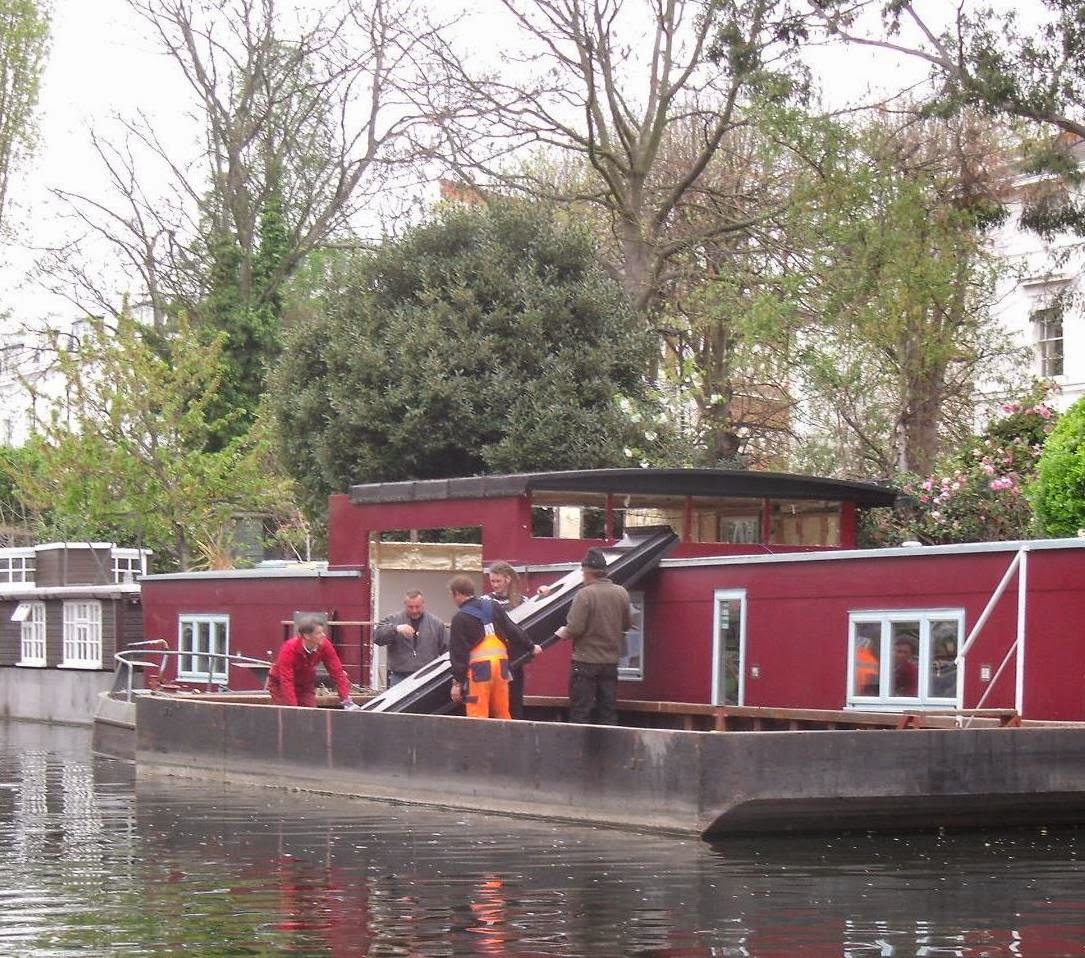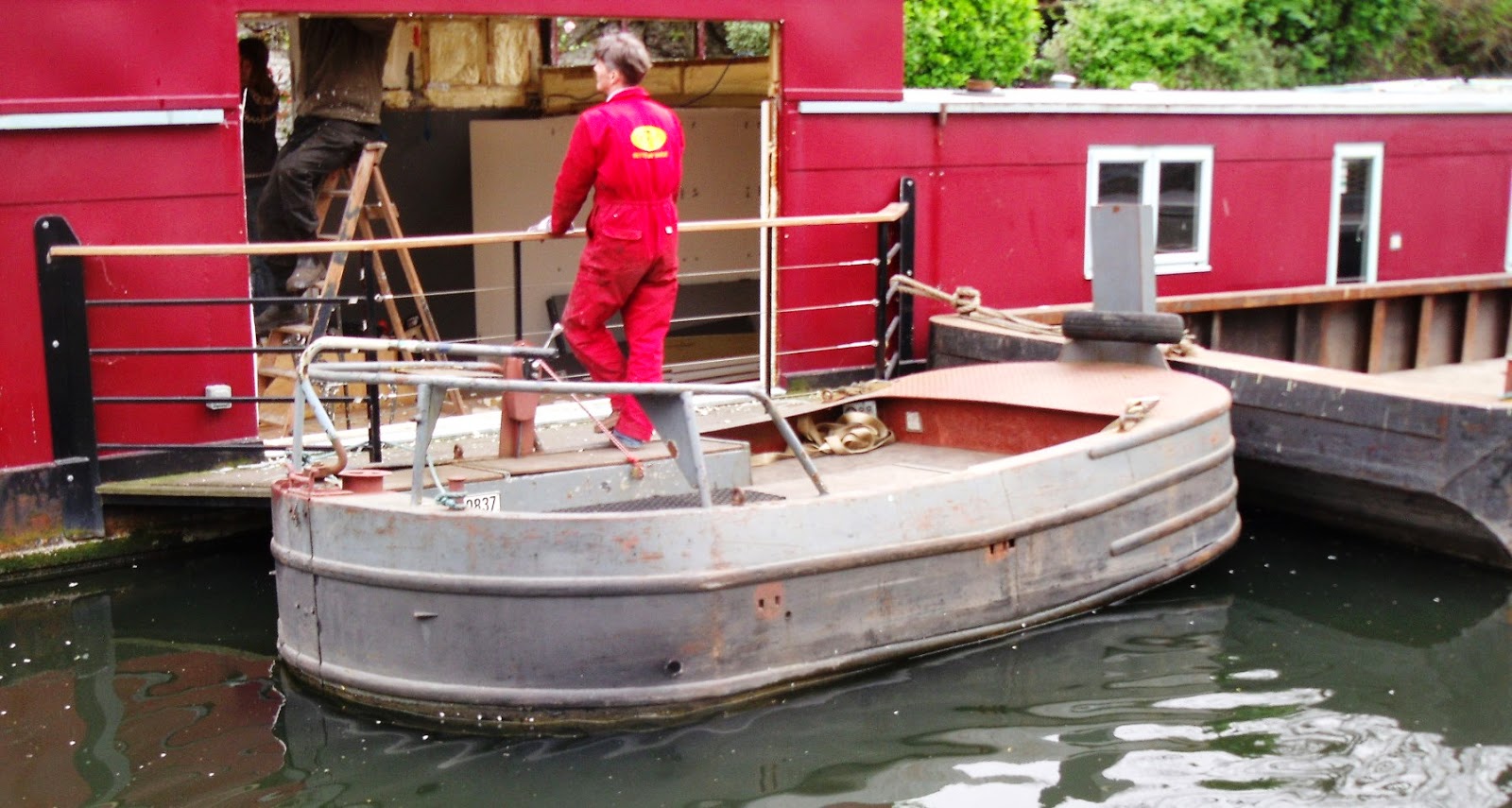 |
| http://gerald-massey.org.uk/Canal/c_chapter_09.htm |

Cruising through Kings Langley past the modern residential homes overlooking the canal it`s hard to imagine the activity many years ago.
Scenes like the one to the right of working boats un-loading coal onto what was once a very busy wharf. The biggest clue has thankfully been retained but from the canal is completely hidden.
It is the Art Deco facade of the Ovaltine building I have pictured below.
 Two local farms, totaling about 460 acres, were purchased in the 1920`s.
Two local farms, totaling about 460 acres, were purchased in the 1920`s.It became Ovaltine Farm producing barley, eggs and milk from it`s award winning herd of Jersey cows. Around 50,000 pullets laid the eggs.
Ovaltine had it`s own fleet of boats that brought coal from the Warwickshire coalfields to power the factory. Eventually oil replaced coal and the only boats left are like this one I pictured on the Thames.
In 1935 the club called `the Ovaltineys` started. It was a childrens club and had in 1939 five million members. All members had 7 rules.
Number one;
I promise to do the things my parents tell me to-because they know what`s best for me and i want them to be proud of me.
There were secret signs and signals as well as a very secret password......ok but just for you and do not divulge it "Ovaltiney-Ovaltiney". Now I`m bound to get kicked out of the club.
 In 1915 production of Ovaltine started in Villa Park Illinois USA. Production ceased in 1988 and at present Nestle have the Ovaltine US rights.
In 1915 production of Ovaltine started in Villa Park Illinois USA. Production ceased in 1988 and at present Nestle have the Ovaltine US rights.The building was used by homeless people until in 1997 it was sold and converted to apartments that were completed in 2003.
The picture with the factory in the background on the right is dated about 1955.
Over on the right is the present day view at Villa Park. As in the case of the UK site the building has been converted into apartments.
A 2 bed can be rented for around $1600 about £987 per month.
If you decide to rent here you might have some haunting experiences included in the rent.
The Ovaltine building at Kings Langley during demolition.

 The present day view (below left) and the site now contains 300 flats and houses.Now one of the top floor " bed flats pictured above is for sale at £340,000 - $550,000.
The present day view (below left) and the site now contains 300 flats and houses.Now one of the top floor " bed flats pictured above is for sale at £340,000 - $550,000.On the sales page is a mortgage calculator and if you tap in £340k minus 10% deposit = 306k at 5% interest over 25 years the payment comes up as £1788-$2,914 per month.
The same purchase figures in the U.S. I find confusing as they quote fees I have no knowledge of. UK readers take note the rate remains fixed for the length of the mortgage unlike here when just a half % rise in the bank rate can push payments up by almost £100-$162 per month. When you look back at past rates here in the UK it is frightening to imagine what could happen.
A 2 bed rental here is £1250-$2,025
 |
| The egg farm with the railway line bottom right |
 |
| Egg farm lower right. Factory next to tall chimney. Canal can be seen coming in to left of chimney. |
 |
| View to the rear of factory backing on to canal. Two pairs of boats can be seen. |
Link to a ladies memories of working on the farm in the war years




















_1.jpg)


























